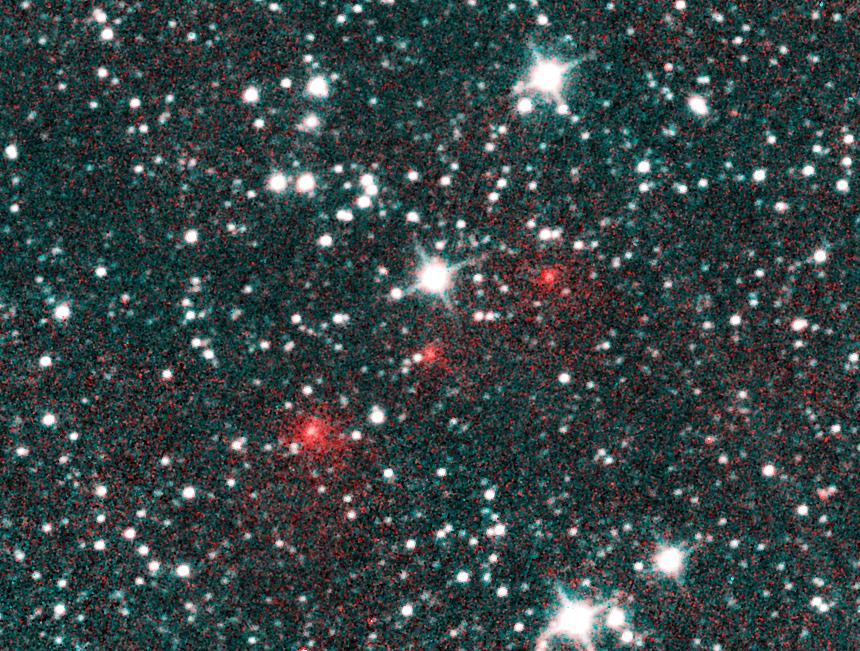
|
Comet NEOWISE Discovery Images
- Click the image above for a larger view
- Full-Res JPEG (860 x 651) (175.1 kB)
- Full-Res TIFF (860 x 651) (1.7 MB)
Caption:
Comet C/2020 F3 NEOWISE appears as a string of fuzzy red dots in this composite of several heat-sensitive infrared images taken by NASA's Near-Earth Object Wide-field Infrared Survey Explorer (NEOWISE) mission on March 27, 2020. The comet was discovered using these images to track its motion across the sky against the backdrop of stationary stars and galaxies. These images have been processed such that cyan colors represent NEOWISE's 3.4-micron channel (a wavelength of light approximately seven times longer than the green light that humans see), and red colors represent the NEOWISE 4.6-micron channel. The comet's extended halo, or coma, of gas and dust was already apparent in the discovery images. The comet appears much redder than the background stars and galaxies because it is much cooler and therefore emits more light at longer wavelengths.
Background Info:
JPL manages NEOWISE for NASA's Science Mission Directorate at the agency's headquarters in Washington. The Space Dynamics Laboratory in Logan, Utah, built the science instrument. Ball Aerospace & Technologies Corp. of Boulder, Colorado, built the spacecraft. Science operations and data processing take place at the Infrared Processing and Analysis Center at the California Institute of Technology in Pasadena. Caltech manages JPL for NASA.
For more information about NEOWISE, visit http://www.nasa.gov/neowise
Cataloging Keywords:
| Name | Value | Additional Values |
|---|---|---|
| Target | C/2020 F3 (NEOWISE) | |
| System | ||
| Target Type | Comet | |
| Mission | Near-Earth Object Wide-field Infrared Survey Explorer (NEOWISE) | |
| Instrument Host | NEOWISE | |
| Host Type | Space Telescope | |
| Instrument | ||
| Detector | ||
| Extra Keywords | Color, Dust, Infrared | |
| Acquisition Date | ||
| Release Date | 2020-07-08 | |
| Date in Caption | 2020-03-27 | |
| Image Credit | NASA/JPL-Caltech | |
| Source | photojournal.jpl.nasa.gov/catalog/PIA23792 | |
| Identifier | PIA23792 | |
